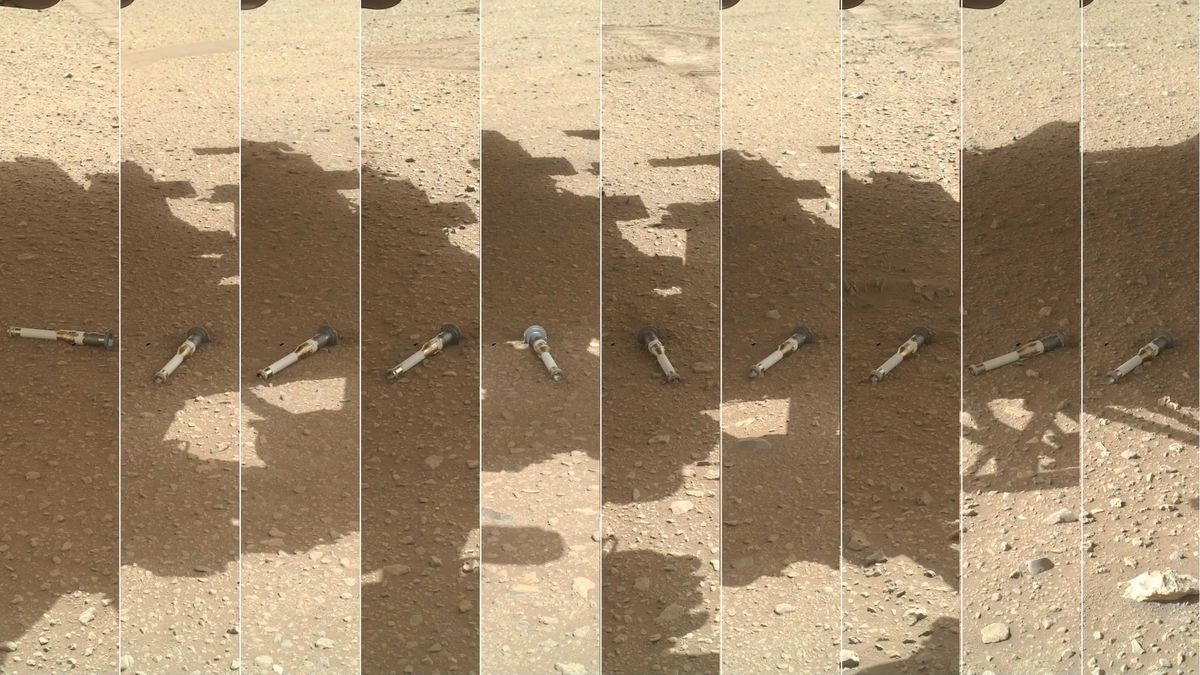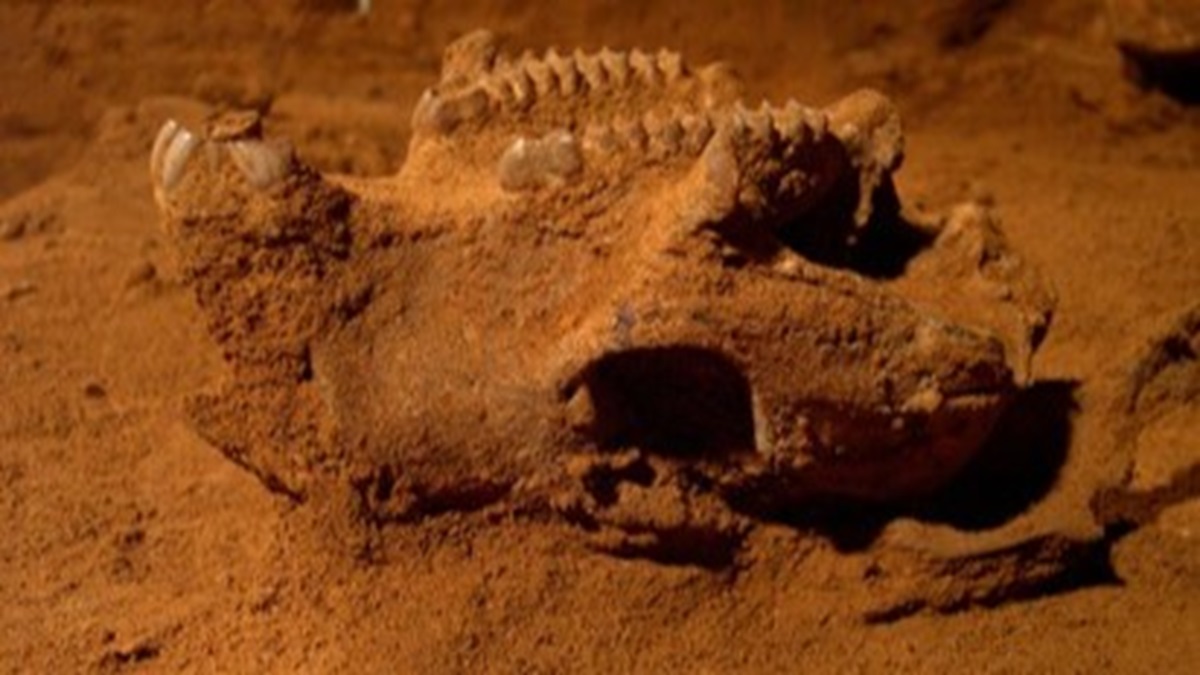
Humans plan to return to the Moon later this decade and will do so with a clear goal in mind: long-term lunar habitation. One outcome of that ambitious goal is unintended alteration of the lunar environment, including its thin atmosphere.
When humans touch down on the Moon, particularly in SpaceX’s giant new Starship lander that NASA has contracted for its Artemis program, they will kick a substantial amount of dust into the lunar sky, temporarily thickening the Moon’s atmosphere. Rosemary Killen, a planetary scientist at NASA’s Goddard Space Flight Center in Maryland, and her colleagues have investigated how ongoing lunar activity (not just launching and landing) will also affect the surrounding environment.
Killen’s team found that landing, exploring, and even breathing on the Moon can alter the lunar atmosphere, creating problems for humans and technology on the surface and making key science goals harder to achieve.
Kicking Up Trouble
The Moon is covered in fine dust, or regolith, which formed as a result of countless impacts to the lunar surface over billions of years. The Moon also has a thin atmosphere, its exosphere, with a density of about 100 molecules per cubic centimeter at the surface. The lunar exosphere is thought to originate from powdery regolith being kicked up by impacts and the solar wind.
Compared with the natural processes that gently loft regolith into the exosphere, a Starship landing will be more akin to, well, a rocket launching powder off the Moon’s surface.
Killen estimated that in areas surrounding some human activities on the Moon, the number of atoms in the exosphere could increase 100,000 times compared with what it is now and extend upward in a column of about 80 kilometers. These atoms would then spread out several kilometers over the lunar surface.
“Even after Starship lands on the Moon and the initial plume dissipates, Starship itself [will continue] to outgas,” Killen explained. Examples of outgassing include the evaporation of water or other moisture on the spacecraft’s exterior, evaporation of water from astronauts’ backpacks, and the release of air from airlocks. Regolith kicked up from mining and construction activities will also alter the thin exosphere.
Ultimately, Killen said, human activities might create temporary atmospheres on the Moon. “You [might] have a localized atmosphere around the astronaut, Starship, the rovers,” said Killen, who presented her research on 11 December at AGU’s Annual Meeting 2024 in Washington, D.C.
The creation of these atmospheres will likely present some problems for astronauts and scientists.
One problem is that evaporated water could settle in regions of the Moon as ice. Some of these regions, such as the Moon’s permanently shadowed craters, are where scientists hope to identify and collect pristine samples of ice that have been on the Moon for billions of years. These lunar ice cores could give scientists valuable insight into the origin of water on the Moon—and on Earth.
Water inadvertently introduced by human activity may contaminate the samples. “We’re going to find water,” said Killen, “and it’s going to be us.”
Another issue created by temporary atmospheres is that they could hamper the function of electronics on the Moon. This impediment would complicate the establishment of infrastructure necessary for long-term habitation and would even raise health concerns for astronauts. “It’s a real problem,” said Killen.
“We’re Going to Be Adding Noise to the Background”
If not replenished, atoms introduced to the exosphere quickly fall to the surface. “The lifetime is 6 minutes on average,” said Killen. “But of course the problem is if people stay there.”
These atoms would form what’s called a collisional atmosphere, so named because it is dense enough for atoms to bump into each other.
“One thing we’re really concerned about is that the dust kicked up by rovers and whatnot is going to be charged, so you get what’s called a dusty plasma,” said Killen. “That is going to be extremely toxic to people if it gets into their lungs. It’s like miners who got black lung disease.”
That same dust could also pose problems for machinery. “It can temporarily or permanently disrupt your electronics,” said Killen.
“The mass of gas that will be blown into the lunar environment by one Starship landing is about 10 times the mass of the entire global atmosphere on the Moon.”
Even when atmospheric particles fall to the surface, they will likely create problems. Any liquid water will stick to the surface of the Moon, but when heated by the Sun, it could be evaporated and transported over the lunar surface, likely settling in cold regions at the poles.
This process “will increase the water in the permanently shadowed regions,” said Killen. “We need to measure the lunar ice before we start adding water from human activities because we’re going to make it very difficult to figure out lunar history.”
Phil Metzger, a planetary physicist at the University of Central Florida who was not involved in the research, agreed that this contamination could make scientific study of the Moon difficult. “If you are continuously generating volatiles at your landing site, it could occur at a sufficiently high density that it prevents you from measuring natural processes on the Moon,” he said.
“The mass of gas that will be blown into the lunar environment by one Starship landing is about 10 times the mass of the entire global atmosphere on the Moon,” he continued. “That’s just from one landing. We want to solve the science as quickly as we can because it’s inevitable that we’re going to be adding noise to the background.”
Lunar Conservation Area
Human activity has already altered the lunar landscape, and introducing change to the lunar exosphere is likely inevitable, Killen admitted.
“Everything is going to outgas,” she said. “The astronauts have to be cooled, and the most obvious way of doing that is water cooling. They need a habitat filled with oxygen and nitrogen, and every time you open the airlocks, some of that is going to escape.”
One suggested way to mitigate the effects of outgassing is to create a lunar conservation area, protected for scientific study. “One proposal is to designate the north pole as a keep-out zone for human activity, except for scientific investigations,” said Killen. “That way you’d have a better chance of determining the history of the Earth-Moon system.”
First, however, “we’re working on understanding the effects” of outgassing from lunar activities, Killen said. Scientists’ second priority is “mitigating the effects for people and instruments. That’s the next step.”
—Jonathan O’Callaghan, Science Writer








Leave a Comment